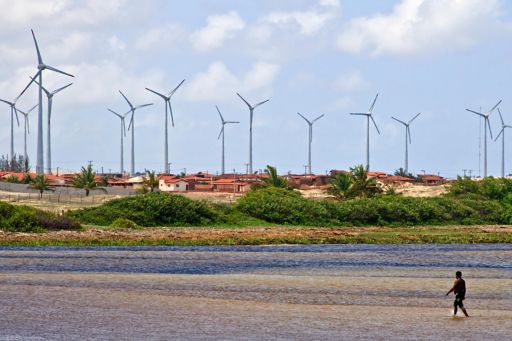A greener agenda for international development
A greener agenda for int’l development
The nexus between climate change and development is undeniable and demands greater alignment and integration of both development and climate change agendas in order to help catalyze real and sustainable change around the world. Achieving lasting change, however, will require an unprecedented level of cooperation between national and local governments, the private sector and civil society.

The climate change and development nexus
The connection between climate change and achieving development goals is hard to deny. Rising global temperatures are expected to make parts of the currently populated world uninhabitable, forcing new waves of migrants into cities and across borders as environmental refugees.
Without a significant change in the current climate change directory, the outlook for some in the developing world may be bleak. Agricultural output in water scarce regions will decline and hunger and malnutrition will be endemic, impacting some 600 million more people in Africa alone.
According to a recent study, climate change already contributes to the death of nearly 400,000 people a year and costs the world more than 1.2 trillion US dollars (USD), wiping 1.6 percent annually from global GDP1.
KPMG professionals’ experience in both the development and climate change sectors suggests that more could be done to factor environmental costs and benefits into the traditional planning process. Increased stringency at the project level could help to ensure that investments reflect environmental best practices.
The role of the development community
Development banks, agencies and donors have become increasingly active in the climate change and sustainability debate and have created a number of innovative and valuable programs.
The challenge facing the development community is how to properly allocate resources to achieve not only development and climate change objectives, but to mobilize effective collaboration between governments, companies, and civil society groups to achieve positive change.
There are four key areas where the international donor community are already making a resounding impact on the climate change agenda:
- Providing funding for climate change action
- Encouraging the development of new technology
- Rallying support around the cause
- Enhancing national capacity
“The development community will play a critically important role in the global response to climate change. Efforts and initiatives to help developing countries understand and adapt to the impacts of climate change are starting to bear fruit, while greater focus is being placed on projects and investments that limit and – ultimately – reduce greenhouse gas emissions.”
Yvo de Boer, KPMG’s Special Global Advisor on Climate Change and Sustainability and former Executive Secretary of the UN Framework Convention on Climate Change.
New opportunities for green development
New opportunities are emerging for the development community to have a greater impact on climate change objectives within their existing mandates. The following are just a few of the ways that government, the private sector and civil society can add unique insights and value to the global response to climate change.
- New technologies can help developing countries adapt and cope with climate change challenges and generally mitigate impacts by reducing greenhouse gas emissions. This includes the use of improved agricultural techniques and improvements to energy technology.
- Policy change is needed to create the right enabling environment to develop climate-friendly initiatives and actions. This agenda spans global initiatives down to purely local efforts.
- Private sector participation is crucial to success. Since private companies undertake most of the economic activity that causes climate change their expertise and capacity are critical to finding the right solutions.
- As cities continue to outpace rural areas in terms of population, greenhouse gas emissions and economic activity, green city development is essential.
Footer
1DARA Group (2012) Climate Vulnerability Monitor: A Guide to the Cold Calculus of A Hot Planet
